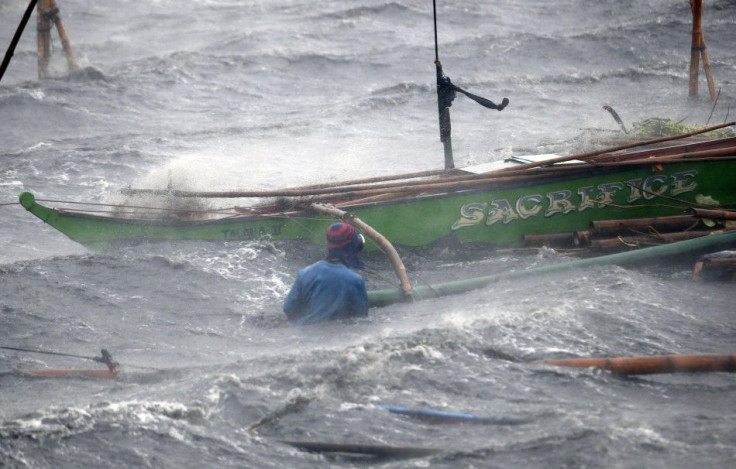It’s Haiyan All Over Again As Philippines Grapples With Heavy Rain, Floods

The memory of super typhoon Haiyan (Yolanda) which battered the Philippines in November 2013 and killed more than 6,000 people hounded the Southeast Asian country anew on Friday as heavy rains caused flooding in Metro Manila and nearby provinces.
Although the very strong winds that came with Haiyan is absent, heavy rains poured from Thursday evening due to tropical storm Fung-Wong (Mario) as the government raised to red rainfall alert in the national capital region and the provinces of Rizal and Bulacan, declared an orange alert for Laguna and yellow alert for Cavite, Batangas and Quezon.
A red rainfall alert forecast downpour of over 30 millimetres within an hour and if itsts three hours, 65 mm is expected.
Flash floods have been reported in different parts of Metro Manila, especially in low-lying areas as TV footage showed knee-high and waist-deep floods in major roads in Manila, Mandaluyong, Paranaque, Marikina and Quezon City.
Marikina is especially flood prone because it is a valley. In 2009, the flood water reached the second floor of homes in the city when storm Ondoy hit the country. Reports said that the water level of the Marikina River is almost 19 feet high, prompting the local government to forcibly evacuate residents who live hear the river.
The floods prompted the national government to suspend classes in all levels in Metro Manila and nearby provinces as well as government offices, except for employees engaged in rescue and relief operations. However, the government left it in the hands of private employers whether to suspend work or not.
Covered by the school suspension are Metro Manila and the provinces of Mindoro, Batangas, Laguna, Rizal, Cavite, Tarlac, Nueva Ecija, Quezon, Camarines Norte, Camarines Sur and Pangasinan, while the no government work covers Metro Manila, Zambales, Bataan, Nueva Ecija, Bulacan, Rizal, Cavite, Batangas, Laguna, Quezon, Polillo Island, Mindoro, Camarines Norte, Marinduque and Pangasinan.
The Philippine weather bureau estimates that Fung-Wong would make a landfall between 11 am and 2 pm.
Several airlines have cancelled their flights due to the bad weather, while vessels have been advised not to sail.
YouTube/raptour






